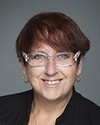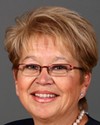Thank you, Madam Chair.
I'd like to thank the witnesses for appearing today.
This study is on violence against aboriginal women, so I'd like to try to shift my questioning. With respect to the impact of the Aboriginal Healing Foundation and to my colleague Ms. Neville's questions with respect to how it's affecting women, the shelters are shutting their doors and programs that were specific to this group are being shut down.
I'd like to refer to a bulletin dated March 29, 2010, from the Assembly of First Nations, wherein they write that:
Indian and Northern Affairs Canada released its evaluation of the Aboriginal Healing Foundation this March--one day following the federal Budget. The evaluation, which identifies an ongoing demand for healing, outlines a management response and work plan and reinforces the point that the Aboriginal Healing Foundation has been very effective and efficient in its delivery of programming.
That's because it's integrated and, I also believe, because the communities bought into it. It just seems to me that we're going into a silo situation and that a lot of funding is being given to Health Canada for programs that may not be bought into in terms of who best could utilize the services.
I'd like to ask all of you this question. Would it not have been better to simply find the funding from Health Canada to at least extend the Aboriginal Healing Foundation funding to 2013, which is clearly what the Assembly of First Nations was looking to have done? Since they're the ones who are utilizing it, does it not maybe appear, top down, that we're not doing this?




